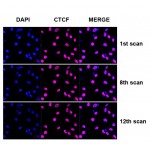| Detection range: | 0.312-20ng/mL |
| Sensitivity: | 0.120ng/mL |
| Type: | Traditional Macrosialin ELISA kit |
| Gene Name: | CD68 molecule |
| Gene Symbol: | CD68 |
| Synonyms: | CD68 molecule; macrophage antigen CD68; CD68 antigen; GP110; LAMP4; SCARD1; macrosialin; scavenger receptor class D, member 1 |
| Species: | Human |
| Sample type: | serum, plasma, tissue homogenates or other biological fluids. |
| Experimental method: | Sandwich |
| Shelf life: | 12 months |
| Gene ID: | 968 |
| UniProt ID: | P34810 |
| Components: | 1. Pre-coated, ready to use 96-well strip plate 1 2. Plate sealer for 96 wells 2 3. Standard 2 4. Diluents buffer: 1×45 mL 5. Detection Reagent A: 1×120 μL 6. Detection Reagent B: 1×120 μL 7. TMB Substrate: 1×9 mL 8. Stop Solution: 1×6 mL 9. Wash Buffer (30× concentrate): 1×20 mL |
| Documents: | Manual-Human CD68 ELISA Kit |
Background
This gene CD68 encodes a 110-kD transmembrane glycoprotein that is highly expressed by human monocytes and tissue macrophages. It is a member of the lysosomal/endosomal-associated membrane glycoprotein (LAMP) family. The protein primarily localizes to lysosomes and endosomes with a smaller fraction circulating to the cell surface. It is a type I integral membrane protein with a heavily glycosylated extracellular domain and binds to tissue- and organ-specific lectins or selectins. The protein is also a member of the scavenger receptor family. Scavenger receptors typically function to clear cellular debris, promote phagocytosis, and mediate the recruitment and activation of macrophages. Alternative splicing results in multiple transcripts encoding different isoforms.
Images
| Typical Standard Curve for Human CD68 ELISA |
You may also be interested in:


